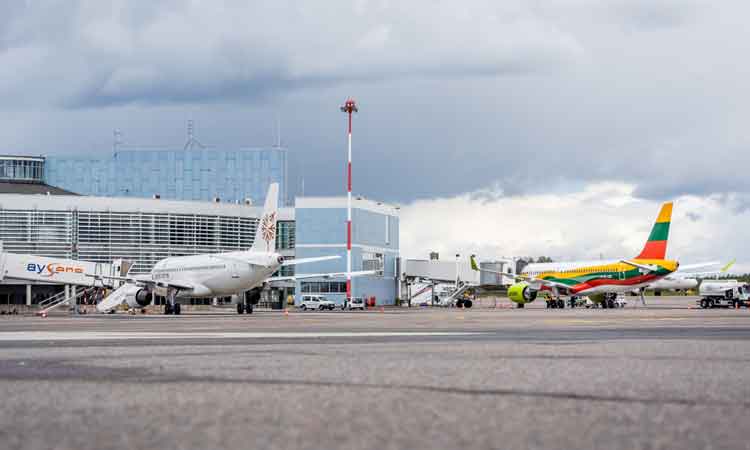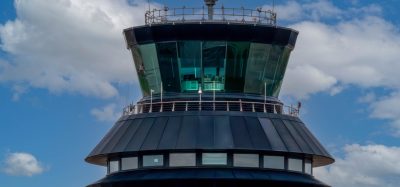Lithuania: The undiscovered destination
- Like
- Digg
- Del
- Tumblr
- VKontakte
- Buffer
- Love This
- Odnoklassniki
- Meneame
- Blogger
- Amazon
- Yahoo Mail
- Gmail
- AOL
- Newsvine
- HackerNews
- Evernote
- MySpace
- Mail.ru
- Viadeo
- Line
- Comments
- Yummly
- SMS
- Viber
- Telegram
- Subscribe
- Skype
- Facebook Messenger
- Kakao
- LiveJournal
- Yammer
- Edgar
- Fintel
- Mix
- Instapaper
- Copy Link
Posted: 13 March 2023 | Aurimas Stikliūnas, Tomas Zitikis | No comments yet
At Routes Europe 2022, International Airport Review’s Editorial Assistant, Lily Mae Pacey caught up with Tomas Zitikis, Interim Head of Aviation Services and Route Development Executive and Aurimas Stikliūnas, Interim CEO and Head of Aviation Services at Lithuanian Airports to discuss how the pandemic opened exciting possibilities for the network operator to welcome different passenger demographics and develop new routes.


In 2019, Lithuanian Airports received 6.5 million passengers across the network. Now, in 2022, along with a speedy recovery since the pandemic, the airport is planning to welcome five million passengers. Furthermore, in the third quarter of 2022, as an airport group, stakes were high to exceed the pre-pandemic levels of passengers. In comparison to other European countries, the airport group is the first in the Baltics, second in the Nordics, and eighth in Europe overall in terms of a positive recovery perspective. “This has been driven by a strong demand, both from local passengers and inbound traffic, particularly during the summer months due to an increase in tourist attraction,” commented Tomas.
Be back soon business travellers
Most of Lithuanian Airports passengers, now, are leisure travellers. Thirty per cent of overall passengers are business travellers and 20 per cent are Visiting Friends and Relatives (VFR.) This is a result of the airports’ both small and niche passenger market. Around 70 per cent are locals and the other 30 per cent are not from Lithuania. The group’s strategy is to encourage more inbound traffic, as the current local market is rather restricted with only three million inhabitants. Looking beyond the immediate impact of the pandemic, the long-term development strategy is to achieve a 50/50 split between locals and visitors, as well as working collaboratively with their stakeholders to develop new routes from major hubs in Europe or developing existing ones: essentially increasing Lithuania’s connectivity to the rest of the world.
The goal with welcoming new routes is to increase the number of destinations the airport has to offer. Aurimas added: “This year (2022), Lithuanian Airports anticipates introducing around 100 destination options from the airports, exceeding the levels the airport had already achieved pre-pandemic, which was originally 92 destinations.”
We often ask our industry experts exactly why an airline should choose to fly with them instead of their competitors. Lithuanian Airports did not disappoint with their answer. A crucial driver for success at the airport is the three million inhabitants in other neighbouring countries such as Latvia and Estonia, which have relatively small air travel markets in comparison to Lithuania. Neighbouring destinations like Krakow in Poland, can be perceived as somewhat more popular as passenger destinations, in comparison to Lithuania. However, one of the airport’s most distinguishing features is the location itself. Sitting just outside of the city centre, passengers are welcomed by beautiful scenery and less hustle and bustle than you would anticipate in other European capitals in Europe. “Our market is, still, an undiscovered destination,” said Tomas.
Over the next five years, the airport’s key aim is to focus on attracting more inbound traffic to Lithuania. The airport welcomes alliance with stakeholders, as well as airlines, to commit to route development strategies for both new routes and to drive existing ones.
Cargo to the rescue
Aurimas said: “Cargo is closely related with Lithuanian Airports.” And, it cannot go unmissed that the majority of airports during the COVID-19 pandemic, globally, were saved by cargo operations. With governmental lockdown and air travel restrictions, cargo operations became increasingly popular, mostly driven by the volume of people longing for any form of a ‘quick fix’ purchase, that you often receive whilst on a holiday or trip away. At Lithuanian Airports, cargo growth was propelled by eCommerce, which continues to show huge potential and demand post-pandemic. He added: “In 2021, the airport operator increased frequencies with regular cargo operators and as a result volumes increased to 26 per cent – a growth of three per cent – and the airports anticipate a further five per cent growth in 2022.”
Furthermore, at Vilnius Airport, the network operator facilitated new cargo operator and supplier, DHL, with a terminal building, further exploring cargo connectivity across operations.
The demonisation of airports
Tomas discussed how he “feels that the aviation sector has been demonised for causing CO2 emissions.” Air travel dominates a frequent traveller’s individual contribution to the climate crisis, yet aviation only accounts for 2.5 per cent of global CO2 emissions. However, it is evident that aviation, over the years, has played its role in speeding up climate change and the current environmental challenges we are facing across the globe. Therefore, Lithuania Airports continues to drive for sustainability throughout operations at the airport; focusing on two key initiatives: reducing emissions and noise, as part of the Airports Council International (ACI World)’s Carbon Neutral Airports by 2050 strategy.
Future business outlook
Lithuanian Airport’s main goal for the future is to grow infrastructurally, including new airport terminals and developments. By 2030 and from a passenger perspective, the airport network expects to reach 10 million passengers per annum and to be offering 150 destinations in total, progressively attracting more and more carriers to be a part of the journey. One thing is for sure, Lithuania is on our destination bucket list!




Related topics
Air freight and cargo, Airport development, Cargo, COVID-19, Passenger experience and seamless travel, Passenger volumes, Route development


















